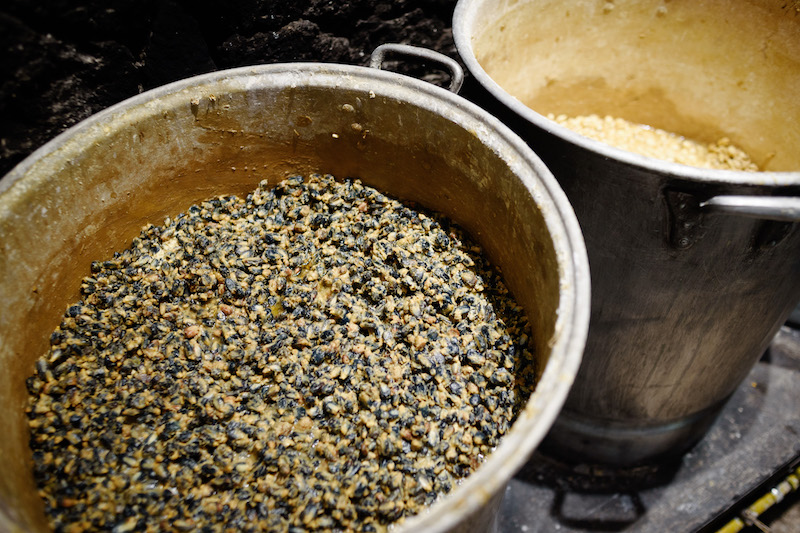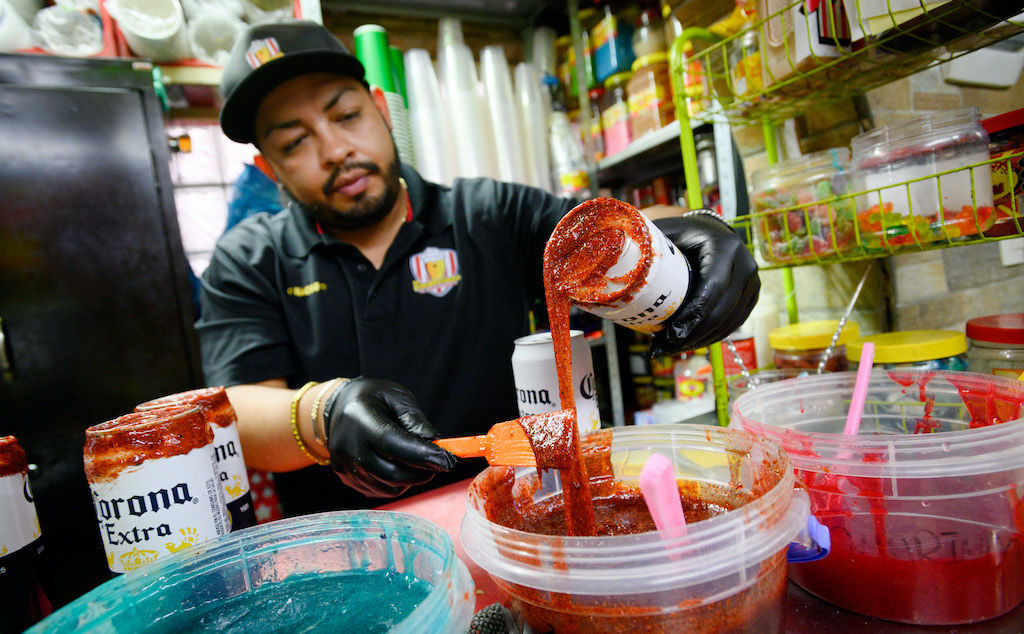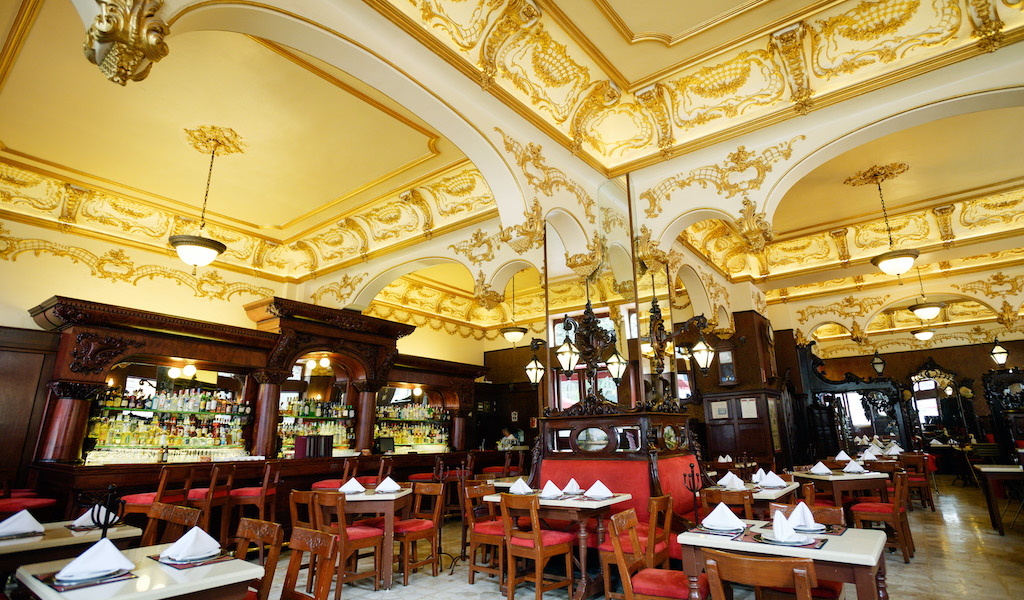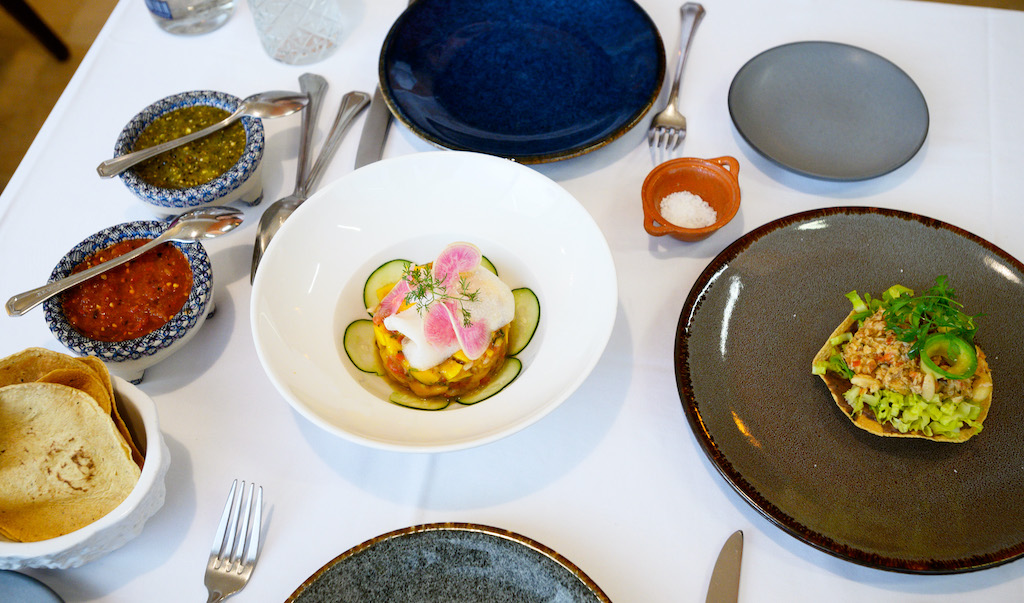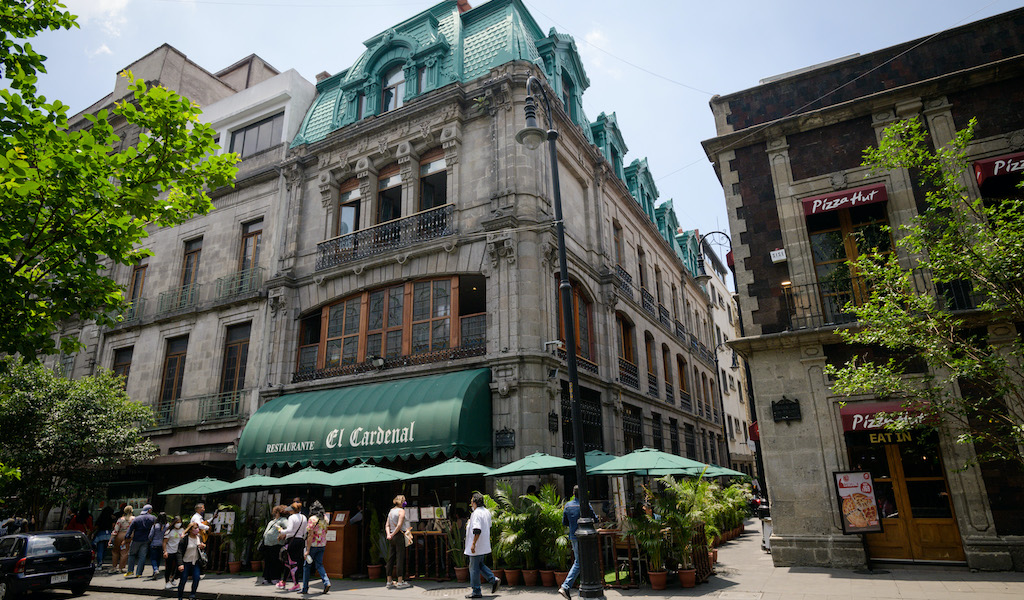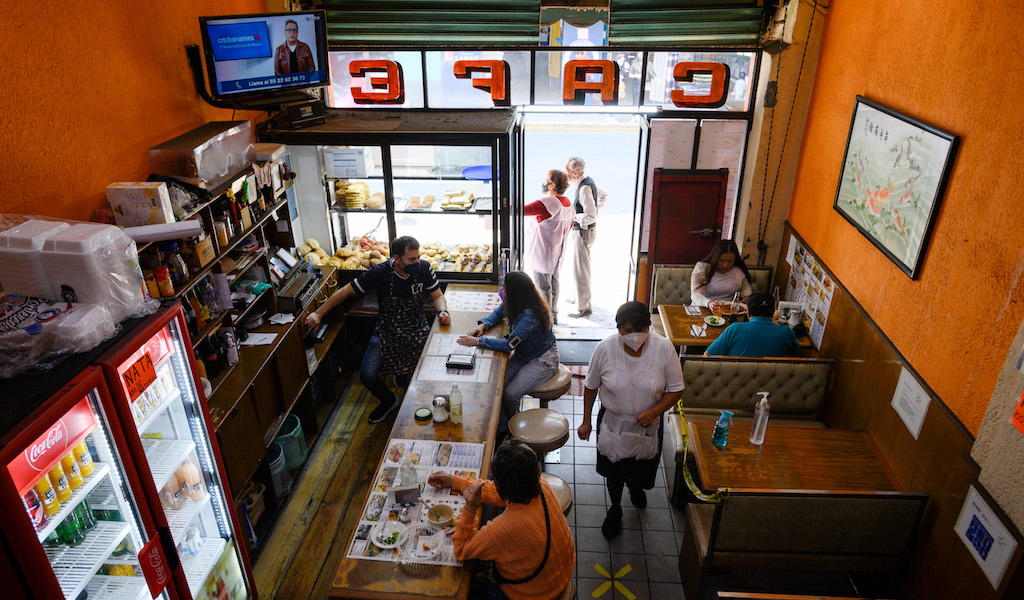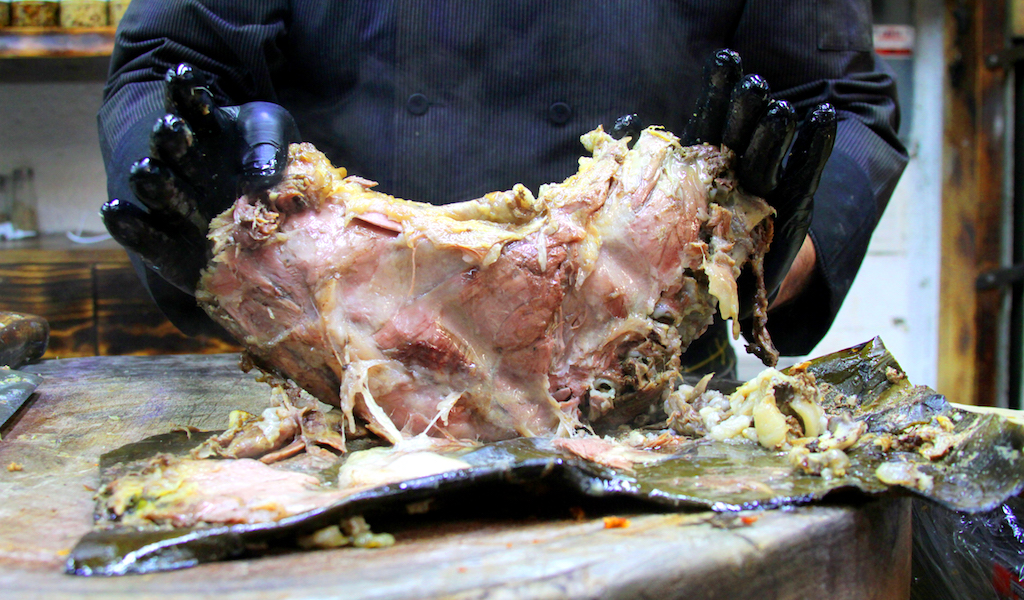We can't find the internet
Attempting to reconnect
Something went wrong!
Hang in there while we get back on track
Search results for "Lydia Carey"
Mexico City
Expendio de Maiz: Tortilla Rebels
Tucked against the back wall of the Expendio de Maiz kitchen are three massive metal pots. Containing cloudy mixtures of corn kernels and limestone water, they seem to sit unattended, when in fact intermittent yet constant attention is being paid to their progress. What is happening is one of the most ancient and important processes birthed by Mesoamerica: nixtamalización. For a people whose main staple was corn, the discovery of nixtamalization was just as important as the domestication of corn itself. This process of mixing corn kernels in an alkaline solution not only loosens the husks of the corn kernels, making them easier to grind, but also provides all kinds of additional nutritional value.
Read moreMexico City
La Chubechada: Michelada Madness
On a neighborhood back street, hemmed in by cars on both sides, sits a house-turned-secret dance club, a girl selling Maruchan soup-in-a-cup under a pop-up tent, and La Chubechada – a tiny storefront with a cutout window just big enough for Maria Guadalupe to poke her head out and take your order. When your drink comes up and she hollers out your name, you better be quick on your feet to go pick it up. For tourists venturing out of the center of Mexico City, La Chubechada feels far from the trendy spotlight and more than a little intimidating, but upon arrival the place hums with a neighborhood vibe – kids hanging out and getting tipsy on the sidewalk with their friends, locals stopping by to say hello.
Read moreMexico City
La Opera: Booths and Bullet Holes
As you step into one of the gleaming chocolate-colored booths and slide along the ruby-red upholstered cushions, the nostalgia that permeates La Opera Bar is palpable. From an intimate corner booth you watch the hustle and bustle of the dining room, but remain inside your own dining world. One of the few centenarian businesses in Mexico City, the booths of La Opera have served as the meeting place of notable journalists, politicians, scoundrels and authors. Gabriel Garcia Marquez once refused some fans an autograph on a napkin, left the bar and returned an hour later with signed books for them. A faded newspaper clipping on the wall shows Carlos Monsiváis, José Luis Cuevas, Fernando Benitez and Carlos Fuentes seated around a table, deep in discussion.
Read moreMexico City
Nicos: Slow Food Staple
It’s hot in Mexico City and Gerardo Vazquez, head chef of Nicos Restaurant, is thinking about cooling off. “Spring in Mexico City is hot,” he says, “And for me, it is very connected to Lent…so, fresh foods, cool things, vegetable-focused dishes.” Tostadas are on the menu at Nicos today – crunchy baked tortillas, one with a cobia fish ceviche, and another with smoked trout, yogurt, arugula and tomato – as well as an Acupulco ceviche with olives and capers, and a cool mango ceviche.
Read moreMexico City
El Cardenal: Capital Classic
Sunlight filters through turn-of-the-century stainglass windows as the Cardenal waiters descend in but-ton-down white dress shirts and black vests. They offer a coffee, a concha, a hot chocolate – and in a flurry of dining activity you suddenly feel like the only person in the room. One of Mexico City‘s most well-loved eating establishments, El Cardenal overflows with extended families having Sunday lunch, tourists gawking at the restuarant‘s dining room murals, and long-time clients greeting the hos-tess by name as they pass by on the way to their favorite table. There’s a reason why El Cardenal is always mentioned in the best of the best restaurants in Mexico City. From humble origins, the restaurant has transformed into a veritable institution and has remained an iconic part of the community for over 50 years.
Read moreMexico City
Cafe Allende: A Mexico City “Cafe Chino” Holds On
Cafe Allende’s manager, Roberto Hernandez, stands behind the counter, serving customers pan chino out of a display case grown foggy from the warmth of the fresh pastries inside. “The idea was to come and study, finish school, and work as a technical engineer. But it didn’t work out that way. This pulled me in,” he says, gesturing around the cafe. “Now it's my life.” Roberto had come to Mexico City as a boy, moving in with a sister 20 years his senior and her husband, Jesús Chew, a Chinese immigrant and the owner of Cafe Allende. Welcomed into their family as another son, Roberto worked at the cafe and spent many evenings with Jesús, learning Mexican-Chinese recipes like the varieties of pan chino, which means “Chinese bread” in Spanish.
Read moreMexico City
El Hidalguense: Homegrown Barbacoa
Barbacoa – pit-roasted lamb or goat – is a Mexico City weekend essential. Stands pop up all over the city on Saturdays and Sunday selling the soft-as-butter meat on a warm tortilla, topped with a sprinkling of cilantro and raw onion and one of the many smoky salsas that generally accompany this dish. Even more, barbacoa broth is a well-known hangover cure, among the ranks of menudo (tripe soup) and pozole (hominy and meat soup). Before the city’s Roma neighborhood became the hip, bohemian mecca that it is now, Moises and Norma Rodriguez opened El Hidalguense, an unassuming spot on one of the neighborhood’s quieter streets. Now, 30 years later, it is known far and wide for roasting some of the best barbacoa in the city.
Read more